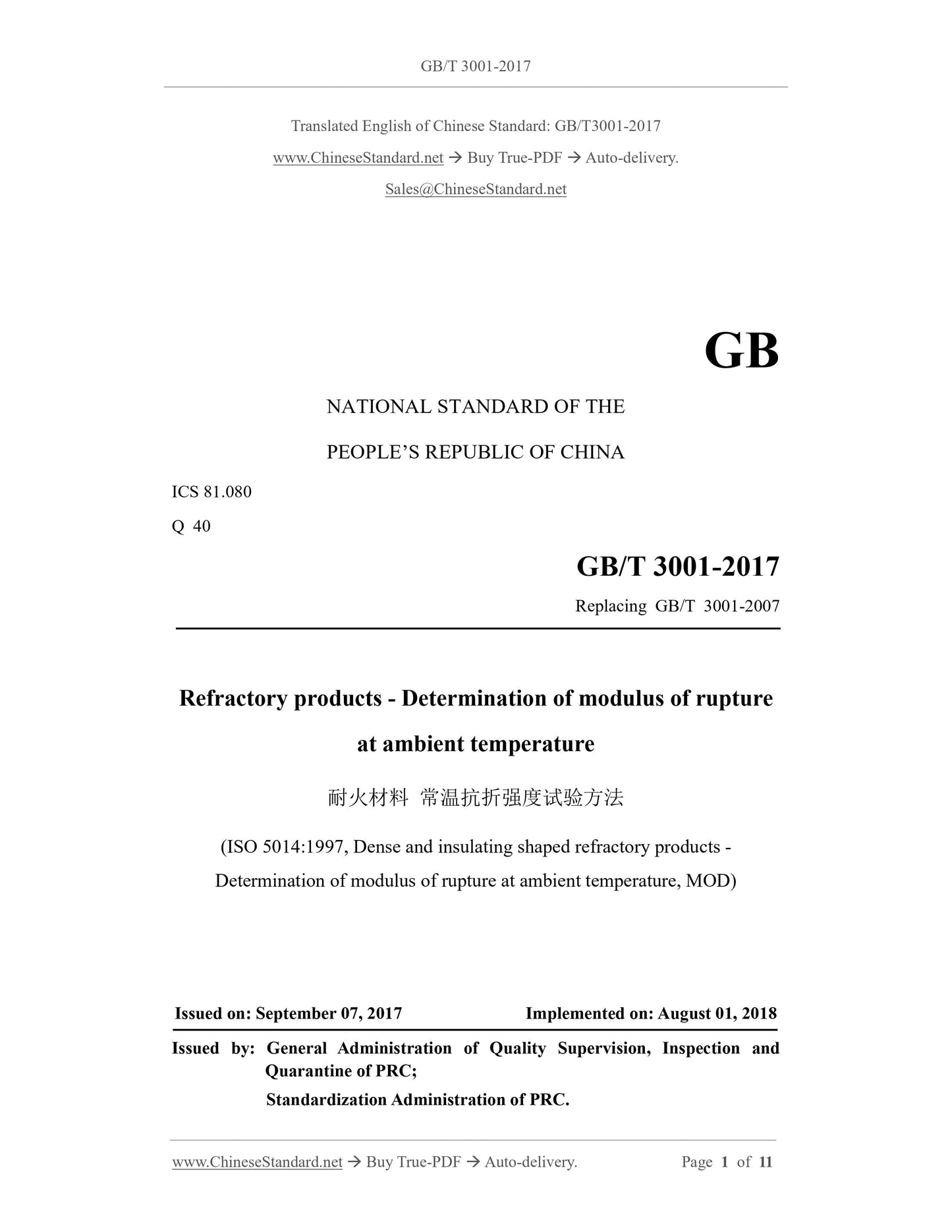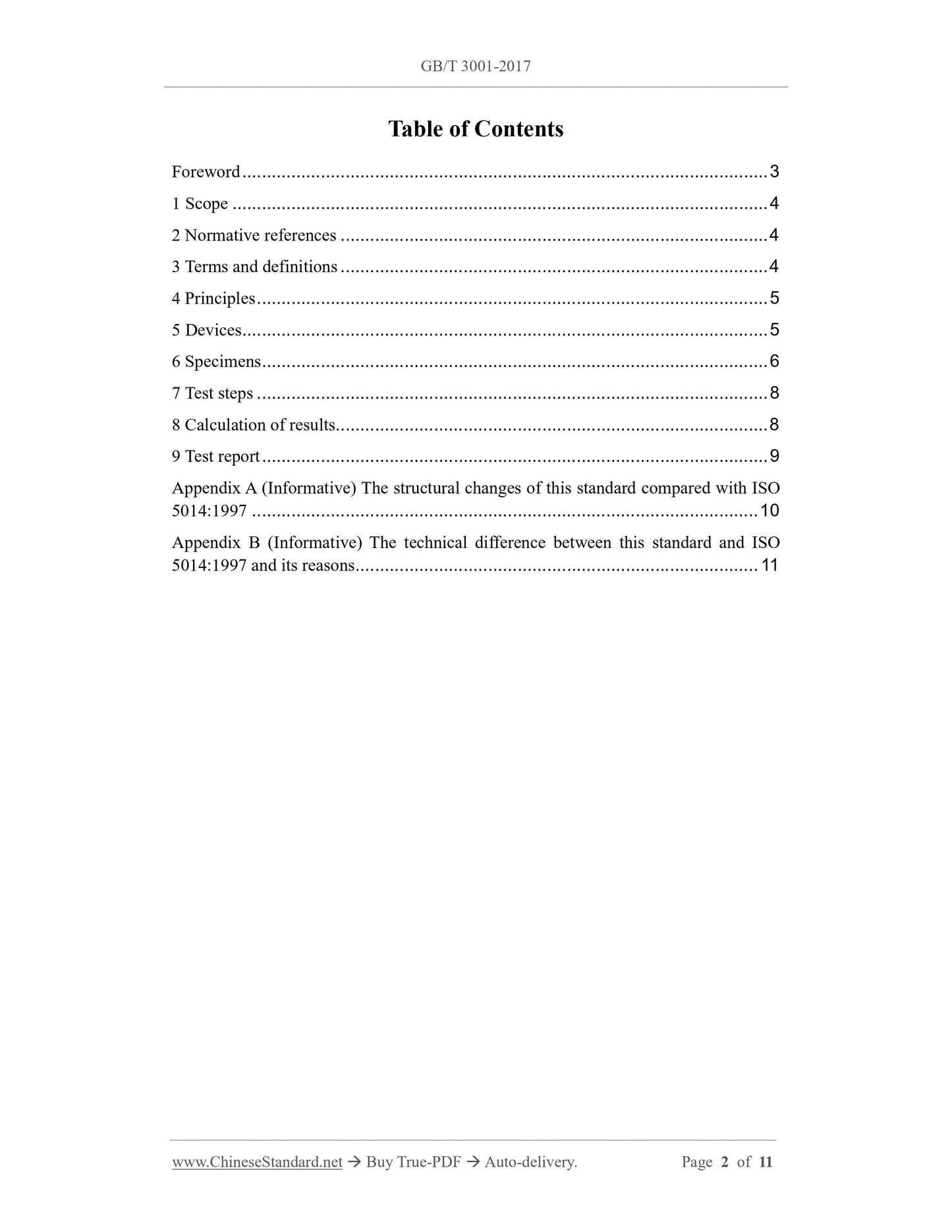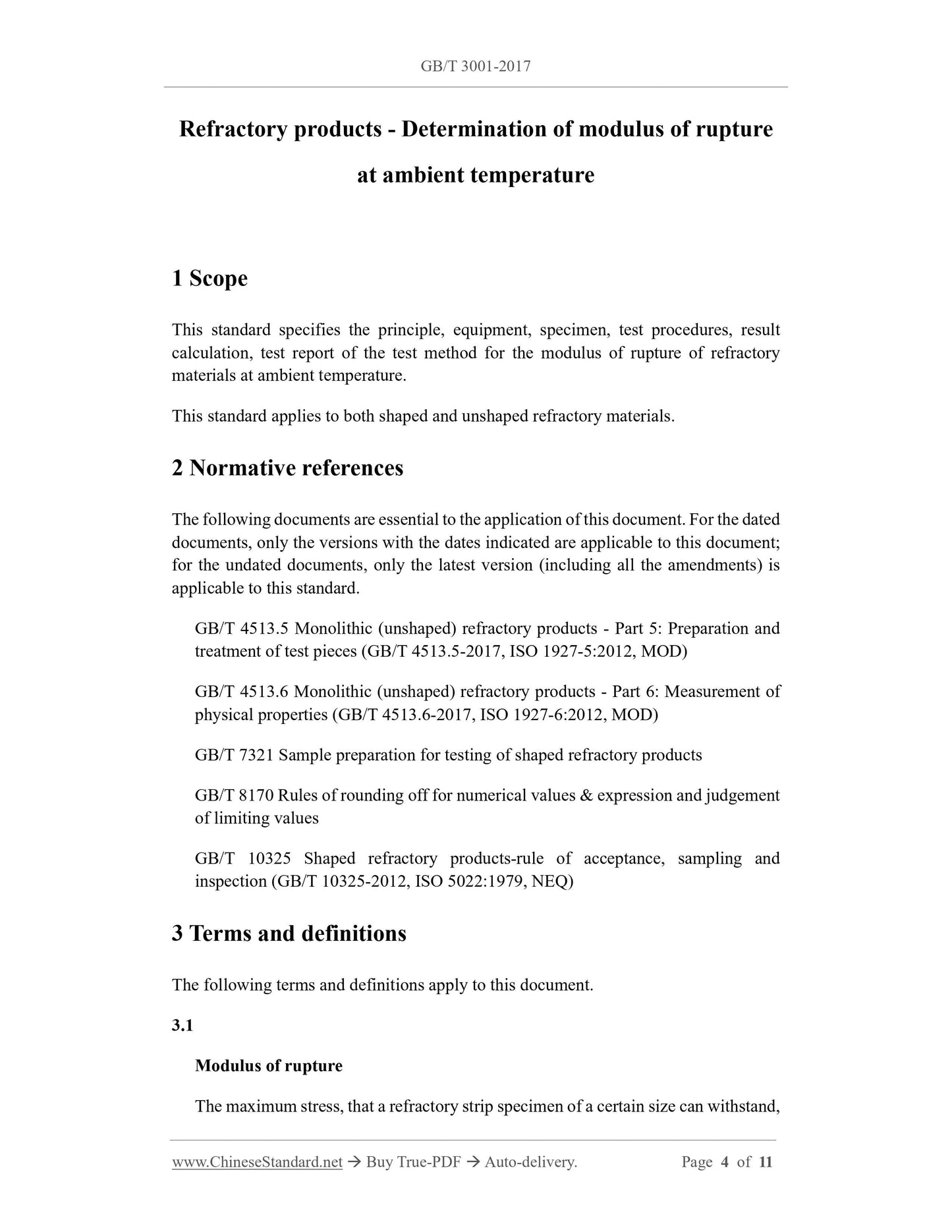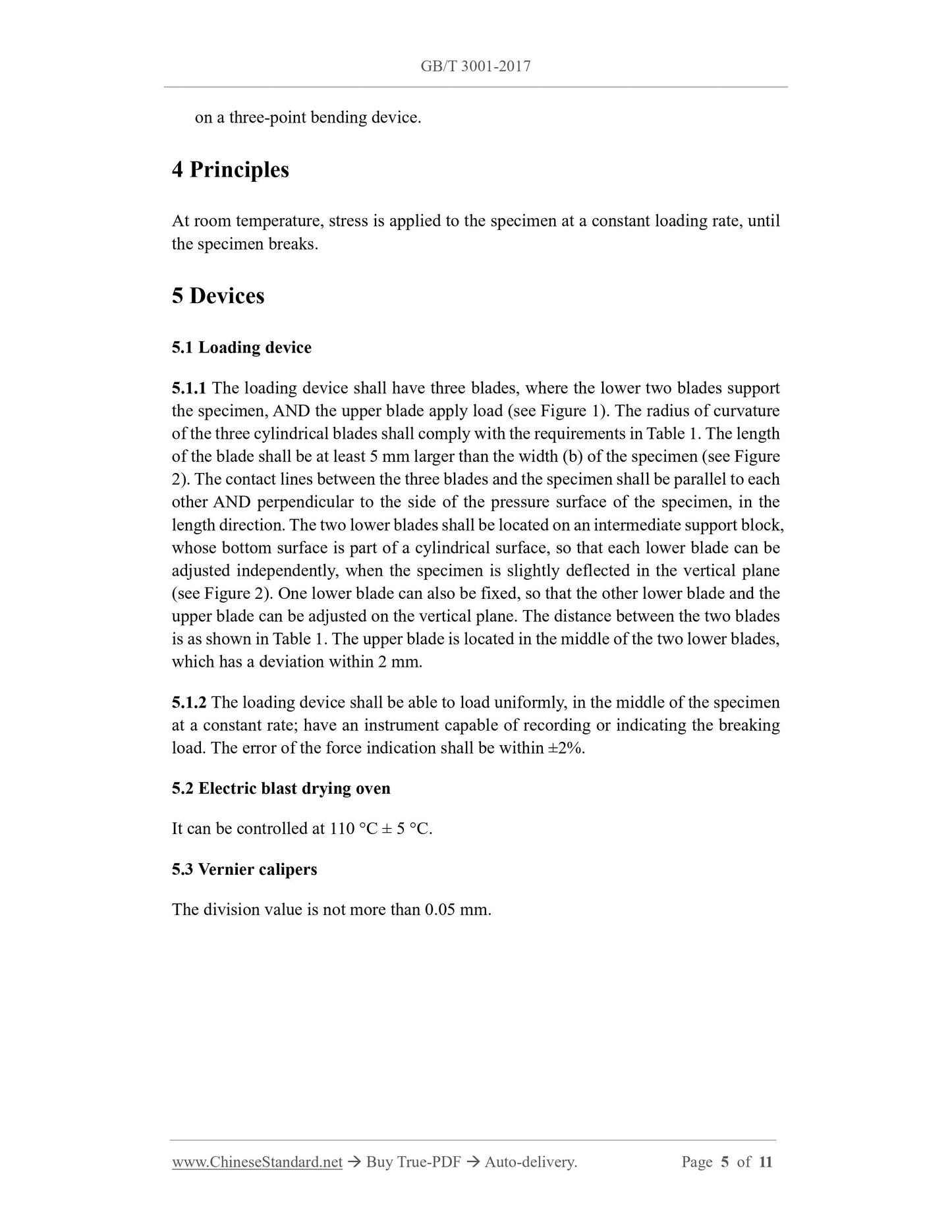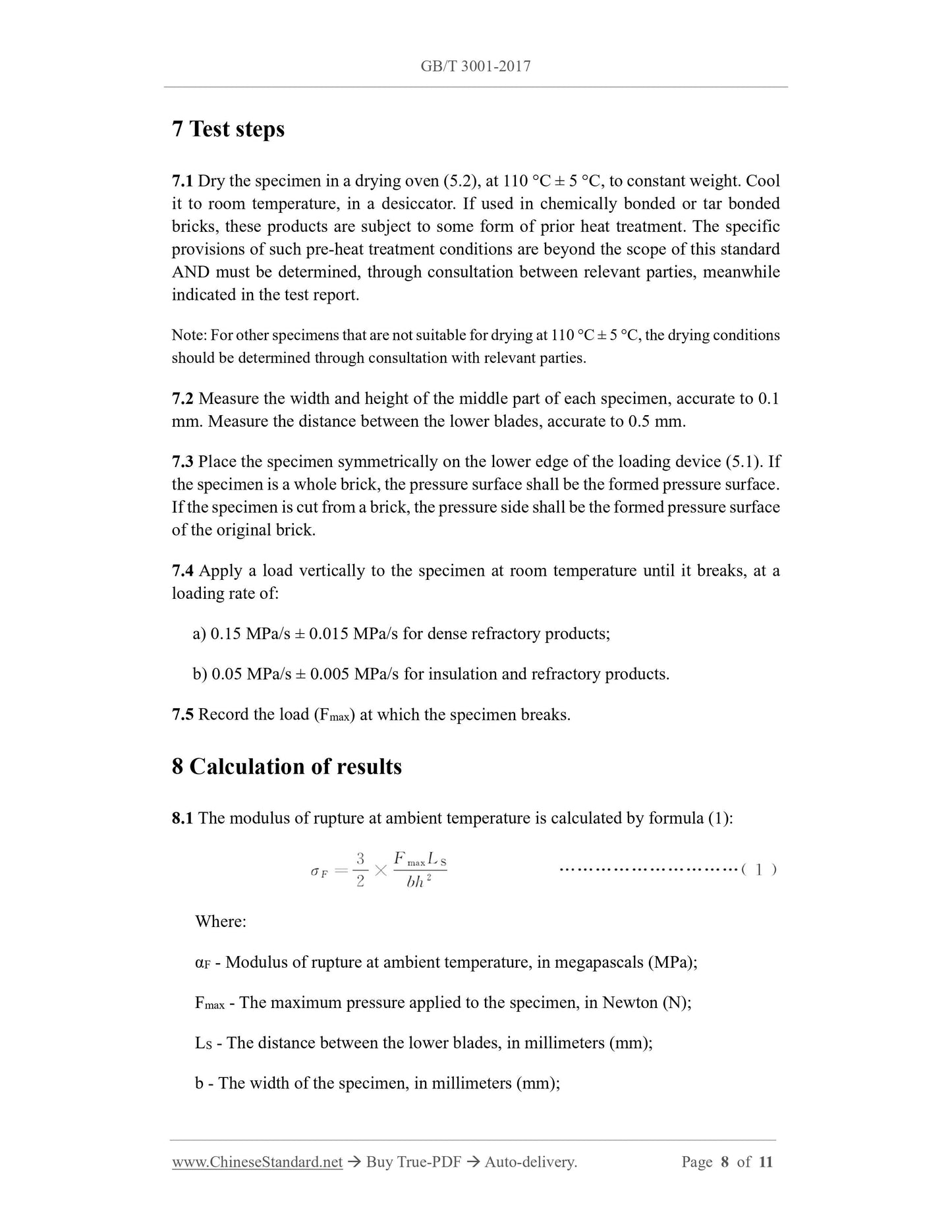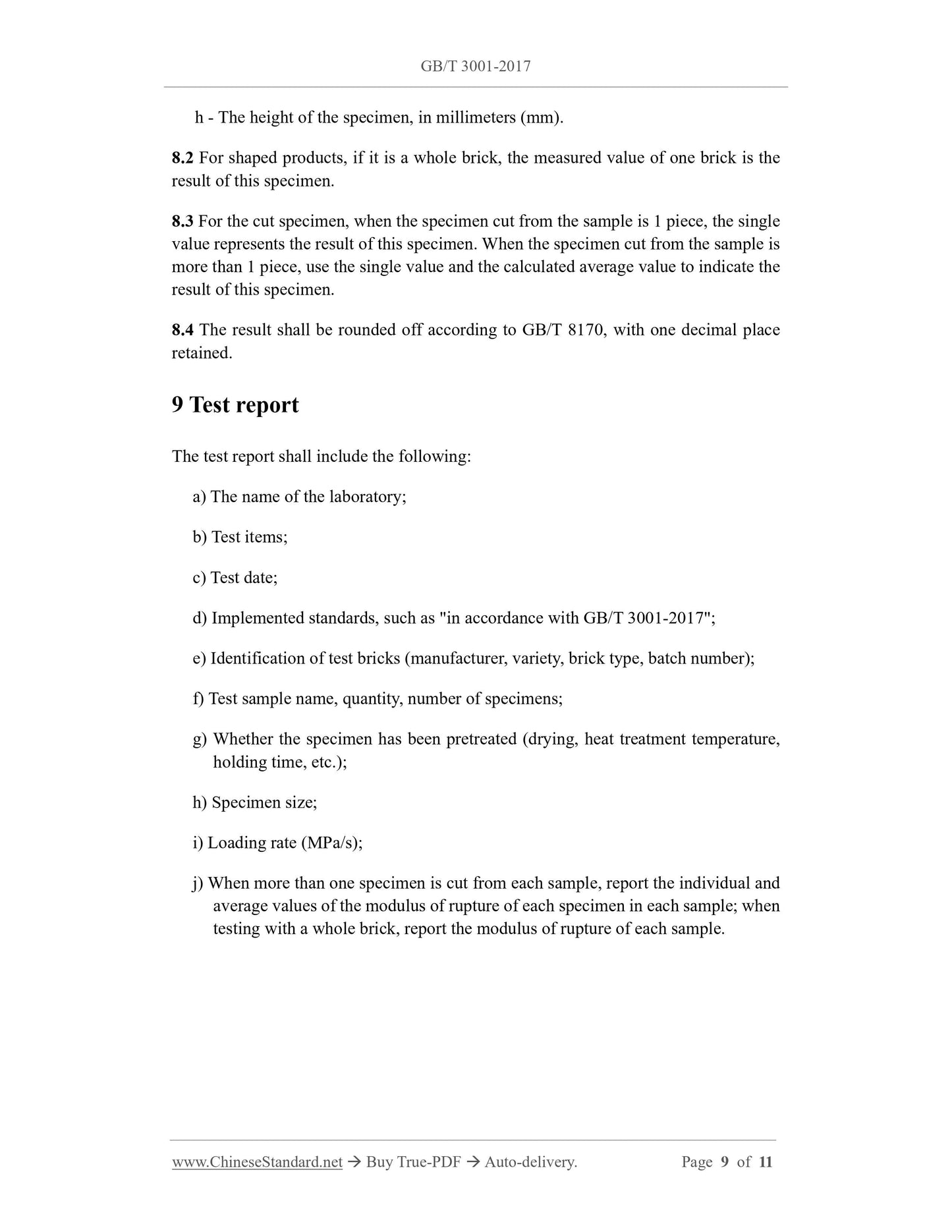1
/
of
6
www.ChineseStandard.us -- Field Test Asia Pte. Ltd.
GB/T 3001-2017 English PDF (GB/T3001-2017)
GB/T 3001-2017 English PDF (GB/T3001-2017)
Regular price
$125.00
Regular price
Sale price
$125.00
Unit price
/
per
Shipping calculated at checkout.
Couldn't load pickup availability
GB/T 3001-2017: Refractory products -- Determination of modulus of rupture at ambient temperature
Delivery: 9 seconds. Download (and Email) true-PDF + Invoice.Get Quotation: Click GB/T 3001-2017 (Self-service in 1-minute)
Newer / historical versions: GB/T 3001-2017
Preview True-PDF
Scope
This standard specifies the principle, equipment, specimen, test procedures, resultcalculation, test report of the test method for the modulus of rupture of refractory
materials at ambient temperature.
This standard applies to both shaped and unshaped refractory materials.
Basic Data
| Standard ID | GB/T 3001-2017 (GB/T3001-2017) |
| Description (Translated English) | Refractory products -- Determination of modulus of rupture at ambient temperature |
| Sector / Industry | National Standard (Recommended) |
| Classification of Chinese Standard | Q40 |
| Classification of International Standard | 81.080 |
| Word Count Estimation | 10,151 |
| Date of Issue | 2017-09-07 |
| Date of Implementation | 2018-08-01 |
| Older Standard (superseded by this standard) | GB/T 3001-2007 |
| Issuing agency(ies) | General Administration of Quality Supervision, Inspection and Quarantine of the People's Republic of China, Standardization Administration of the People's Republic of China |
Share
